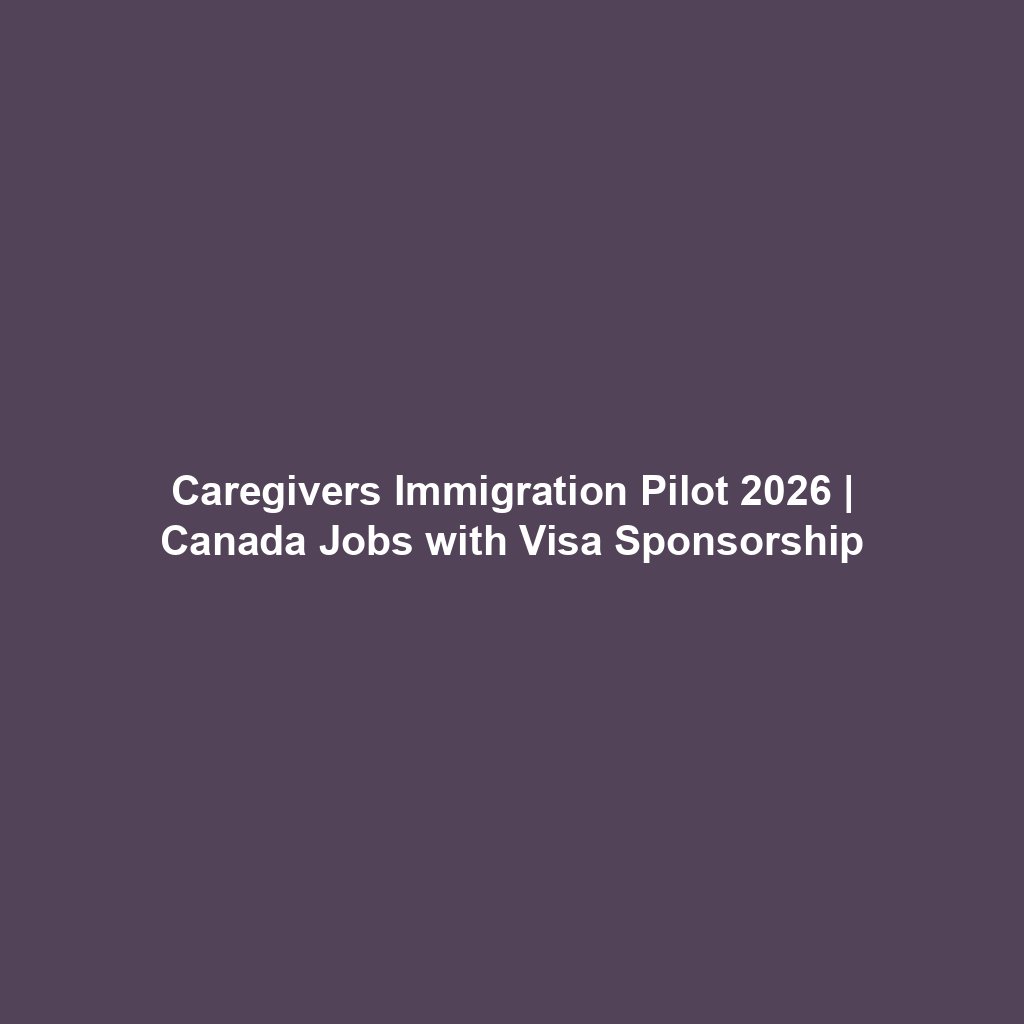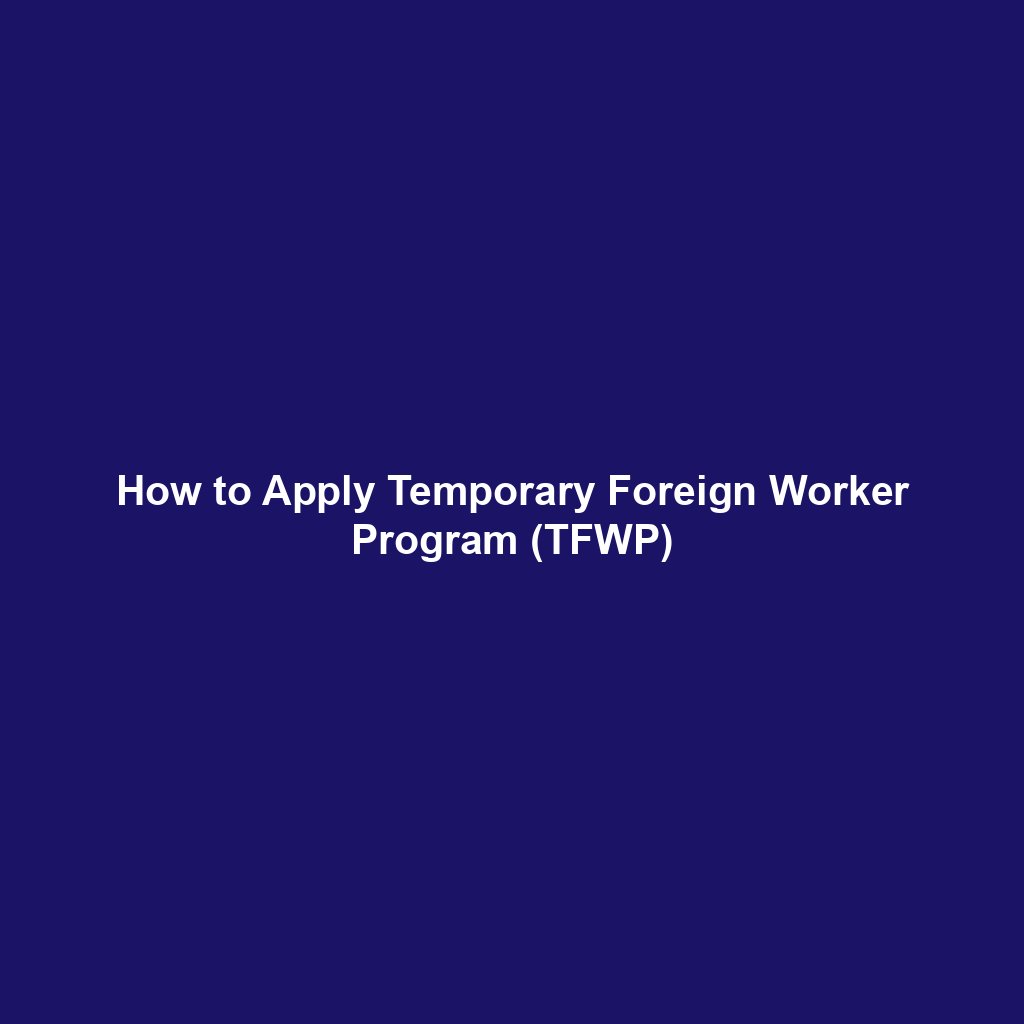Explore the Canada Caregivers Immigration Pilot 2026: visa-sponsored caregiver jobs, eligibility, step-by-step application guide, salaries, and how to move to Canada permanently as a home care or child care worker.
Canada remains a global leader when it comes to immigration opportunities for foreign workers, and one of the most compassionate and family-friendly pathways is through the Caregivers Immigration Pilot. If you’re a caregiver—whether you provide child care, support for seniors, or assistance for people with medical needs—2026 is a great year to apply for Canadian caregiver jobs with visa sponsorship.
This program not only offers a pathway to permanent residency, but also allows foreign caregivers to bring their families along and build a stable life in Canada. The demand for professional and compassionate caregivers continues to grow due to Canada’s aging population and increasing need for in-home support.
In this comprehensive guide, we’ll break down the Caregivers Immigration Pilot 2026, explain the types of caregiver jobs available, how to get visa sponsorship, eligibility criteria, and how to apply successfully.
Key Highlights
- 🇨🇦 The Caregivers Immigration Pilot allows foreign caregivers to work and live in Canada with a clear path to permanent residency.
- 👨👩👧👦 Open to child care providers and home support workers with or without prior Canadian experience.
- 💼 Most jobs under this pilot come with visa sponsorship and employer support.
- 💰 Competitive salaries ranging from CAD $30,000 to $50,000+ annually, depending on province and role.
- 📝 Includes an open work permit and allows family members to accompany applicants.
What is the Caregivers Immigration Pilot?
The Caregivers Immigration Pilot is a special immigration pathway launched by the Canadian government to attract qualified foreign workers to fill caregiver roles. It is made up of two main streams:
- Home Child Care Provider Pilot (NOC 44100)
- Home Support Worker Pilot (NOC 44101)
These pilots are designed to replace the older Live-In Caregiver Program (LCP), offering more flexibility and better conditions. The main advantage is that you can apply for permanent residence right after gaining 24 months of work experience in Canada—or in some cases, even before starting the job if you already meet the criteria.
Types of Caregiver Jobs in Canada
1. Home Child Care Provider
You’ll work in a private household caring for children under 18 years. Tasks may include:
- Preparing meals and snacks
- Supervising playtime
- Helping with homework
- Doing light housekeeping related to the child’s care
Average Salary: CAD $30,000 – $45,000/year
2. Home Support Worker
This role involves caring for elderly people or those with disabilities or chronic illnesses. Responsibilities include:
- Assisting with bathing, dressing, and mobility
- Administering medications (under guidance)
- Cooking and feeding
- Providing emotional support
Average Salary: CAD $32,000 – $50,000/year
Eligibility Requirements for the Caregivers Immigration Pilot 2026
To qualify for the 2026 intake, applicants must meet the following:
- Language Proficiency: CLB 5 in English or French (IELTS or TEF)
- Education: Minimum of one-year post-secondary education (equivalent to Canadian standards)
- Job Offer: Full-time, non-seasonal offer from a Canadian employer in an eligible NOC
- Work Experience (if applying for PR directly): At least 24 months of Canadian experience in the caregiver role
- Admissibility: Pass medical exams, background checks, and provide police certificates
If you don’t yet have Canadian experience, you can apply for a work permit and PR together, and move to Canada to gain the required work experience under an occupation-restricted open work permit.
Benefits of the Caregivers Pilot Program
- ✅ Work + PR Pathway: Apply for permanent residence while working
- ✅ Family Included: Spouses and children can accompany you
- ✅ Open Work Permit: More flexibility than employer-specific permits
- ✅ No LMIA Required: Unlike other visa streams, this pilot doesn’t require employers to get a Labour Market Impact Assessment
- ✅ Nationwide Jobs: Positions available across all provinces and territories
How to Apply for the Caregivers Immigration Pilot 2026
Step 1: Secure a Valid Job Offer
Search for caregiver jobs in Canada using these trusted websites:
Look for employers who mention visa sponsorship or are willing to support your application through the pilot. Prepare a strong caregiver-focused Canadian-style resume and a compelling cover letter.
Step 2: Gather Required Documents
You will need the following:
- Valid Passport
- Educational Credential Assessment (ECA) from WES, ICAS, or CES
- IELTS or TEF language test results
- Police clearance certificate
- Proof of previous caregiver experience (if applicable)
- Written job offer from Canadian employer
Step 3: Apply for Work Permit and PR
If you’re applying with less than 24 months of Canadian caregiver experience:
- Submit both a permanent residence application and an occupation-restricted open work permit application together
- Pay the required processing fees (Work permit: CAD $155, PR fee: CAD $1,365)
- Submit online via the IRCC Portal
If you already have 24 months of eligible experience in Canada:
- You can apply directly for permanent residence under this pilot
- No need for a work permit if you’re already working in Canada
Step 4: Wait for Processing
Processing time for work permits is typically 12–16 weeks depending on the volume. You may be contacted for biometric verification and an interview.
Step 5: Move to Canada and Start Work
Once approved, you’ll receive your work permit and can travel to Canada. Upon completing 24 months of work, you’ll be eligible to finalize your permanent residency if not already granted.
Average Salary Table for Caregivers in Canada (2026)
| S/N | Job Role | Average Annual Salary (CAD) | Top Provinces |
|---|---|---|---|
| 1 | Home Child Care Provider | $30,000 – $45,000 | Ontario, Alberta, BC |
| 2 | Home Support Worker | $32,000 – $50,000 | Nova Scotia, Ontario, QC |
Key Takeaways
- Caregivers are in high demand across Canada, and the pilot program provides a clear, supportive pathway for immigrants.
- No LMIA required, making the application process simpler.
- You can bring your spouse and children under this program.
- With competitive salaries and permanent residency options, caregiver jobs offer long-term stability and security in Canada.
- Applying early in the 2026 intake increases your chances, as yearly caps may be reached quickly.
Conclusion: Take the Next Step Toward a New Life in Canada
Becoming a caregiver in Canada under the 2026 Caregivers Immigration Pilot is more than just finding a job—it’s about building a better future for yourself and your family. With a streamlined application process, visa sponsorship options, and the chance to become a permanent resident, this program offers everything you need to start fresh in a new country.
Whether you’re an experienced caregiver or just starting your journey, Canada needs your skills and compassion. Don’t let this opportunity pass—start your application now and take the first step toward your Canadian dream.
📌 Ready to apply? Begin by exploring job offers and preparing your application documents. Your future in Canada starts today.
FAQs – Caregivers Immigration Pilot
1. Can I apply for the Caregivers Pilot without a job offer?
No. A valid, full-time job offer from a Canadian employer is mandatory to apply for this program.
2. Is the IELTS test required for caregiver jobs in Canada?
Yes. You must prove language proficiency at CLB level 5 or higher using IELTS (English) or TEF (French).
3. Can my spouse work in Canada if I’m approved under the pilot?
Yes. Your spouse can apply for an open work permit, and dependent children can study in Canada.
4. What happens after I complete 24 months of work?
You can submit proof of your work experience and finalize your permanent residency application if you haven’t done so already.
5. Are caregivers required to live in the employer’s home?
No. Unlike the older Live-In Caregiver Program, living in the employer’s home is not mandatory under this pilot.






